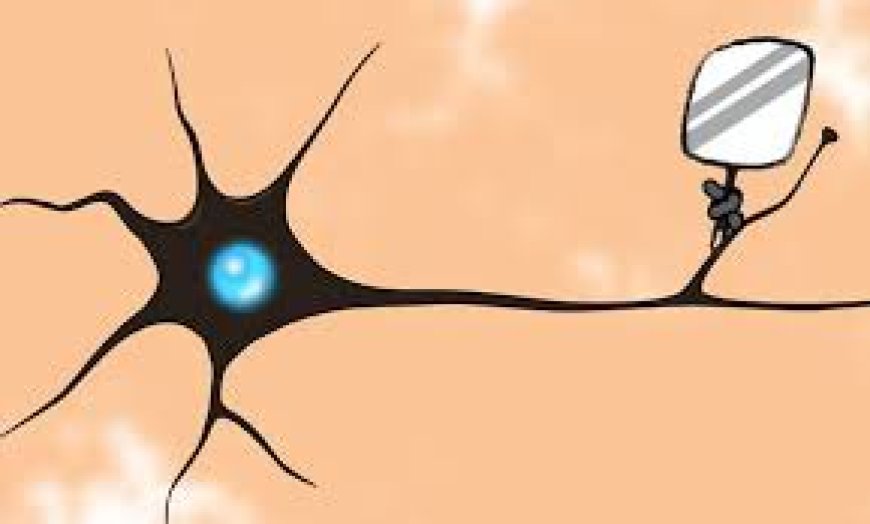Mirror Neuron
Since the existence of human beings as social entities, they have lived within societies and sustained their existence in association with communities. Within society, individuals have observed the actions of others to make sense of certain behaviors. Through this observation, individuals have managed to survive and adapt. Initially, these behaviors were encoded in the individual's visual memory and compared with other representations (Demir and Gergerlioğlu, 2021). Alongside the visual processes that individuals encoded, motor processes were also affected, leading individuals to develop movements for the recognition and repetition of actions. The observation and repetition of behaviors occurred through the mirror neuron system.

The concept of mirror neurons has become popular in recent years and has attracted the attention of researchers. Discovered by Rizotti et al. in the early 1990s during the examination of macaque monkeys, these neurons were found in the inferior parietal lobe of the brain. It was determined that this group of neurons was activated not only when macaques grasped or manipulated objects but also when they observed the movements of a human or fellow macaque (Hari et al., 2021).
Mirror neurons differ from visual and motor neurons as they contain both visual and motor responses in the same neuron. Therefore, they are considered different from pure visual neurons (Herrington et al., 2011). It should be noted that, in the perception of movements, there are both visual and motor systems besides visual systems. In short, the perception and production of movements involve an integrated process rather than two separate cognitive processes (Demir and Gergerlioğlu, 2012). In brain imaging studies, the inferior frontal gyrus (IFG) and inferior parietal gyrus (IPG), along with Brodmann areas 44-45, are recognized as classical areas belonging to the mirror neuron network (Hari et al., 2021).
In a study, lesions were created with rTMS in the mirror neuron system's areas, including the Broca area and IFG, and the ability of subjects to imitate various actions was examined. The results showed a decrease in imitation and repetition skills in subjects with created lesions (Heiser et al., 2003). In a study conducted by Fazio et al. (2011) on individuals with Broca's aphasia but without apraxia, participants were found to be unable to predict the sequence of actions performed by a human but could predict the sequence of independent physical movements.
Mirror neurons can be activated differently depending on the observer's perspective. In a study conducted by Caggiano et al. (2011), different subsets of mirror neurons were found to be activated when an action was observed from a distance compared to when it was observed from the perspective of the action performer.
For mirror neuron activity in humans, a purely visual path is not necessary; it can also be activated acoustically or tactically. Mirror neurons can be activated acoustically when there is sufficient auditory information (Ricciardi et al., 2009).
Mirror neurons, in humans as well as in macaque monkeys, replicate and imitate movements, but they are more developed in humans. In addition to these features, it is known that mirror neurons play a role in various complex functions such as empathy, language, learning, and memory (Hari et al., 2021).
In a study, viewers were shown various films, and the control group was shown an unedited segment from a typical day in the park. Brain activities were measured with fMRI, and it was examined whether there was a difference between the shown segments. According to the results of correlation analysis, there was a moderate to high correlation between segments obtained from various and different films, while there was a low correlation between segments shown in the park (Hasson et al., 2008). Because the plot and emotions in cinema are considered to be more significant than in a typical day at the park, viewers' mirror neurons were thought to be more activated, leading to higher brain activities.
It is suggested that mirror neurons play a role in many diseases. For example, lower mirror neuron activity has been found in autism patients. This implies that mirror neurons play a crucial role in communication. Mirror neuron activity also plays a role in Alzheimer's, Parkinson's, and ALS diseases, and the mirror neuron activities of patients with these diseases were found to be lower compared to healthy individuals (Hari et al., 2021).
In conclusion, mirror neurons play a role from primitive behaviors to higher cognitive behaviors. Mirror neurons provide a vital convenience for human beings, who are social beings. This neuron network, which is still the subject of extensive research today, holds great importance. Studies on the activation of these neuron networks in clinical diseases and their improvement in clinical patients are still on going.
REFERENCES
- Hari E, Cengiz C, Kilic F, Yurdakos E. A clinical approach to the mirror neuron system and its functions. J Ist Faculty Med 2021;84(3):430-8. doi: 10.26650/IUITFD.2021.81b4218
- Demir, E.A. ve Gergerlioğlu,H.S. (2012). Ayna Nöron Sistemine Genel Bakış. Eur J. Med Sci,2(4),122-126.
- Heiser M, Iacoboni M, Maeda F, Marcus J, Mazziotta JC. The essential role of Broca’s area in imitation. Eur J Neurosci,17(5),1123-8.
- Herrington,J.D.,Nymberg,C., Schultz, R.T.(2011).Biological motivation task performance predicts superior temporal sulcus activity. Brain Cogn,3(77),372-81.
- Caggiano,V., Fogassi,L., Rizolatti,G.,Thier,P.,Giese M.A.,Casile A.(2011). View-based enconding of actions in mirror neurons in area F5 in macaque premotor cortex. Curr Biol,21(2),144-148.
- Ricciardi,E.,Bonino,D.,Sani,L.,Vecchi,T.,Guazzelli,M.,Haxby,JV.,Fadiga,L.,Pietrini,P. (2009). Do we really need vision? How blind people “see” the actions of others. J Neusci,29(97),9719-24.
- Fazio,P.,Cantagallo,A.,Craighero,L.,D’Auliso,A.,Roy AC.,Pozoo,T. Ve ark.(2009). Enconding of human action in Broca’s area. Brain,132(7),1980-8.
- Hasson, U., Landesman, O., Knappmeyer, B., Vallines, I., Rubin, N. & Heeger, D. J. (2008). Neurocinematics: The neuroscience of film. Projections, 2(1), 1-26.
- Demirtaş,H.(2002), İletişim Psikolojisi. Nobel Akademi Yayıncılık.,93-111.
What's Your Reaction?















































































